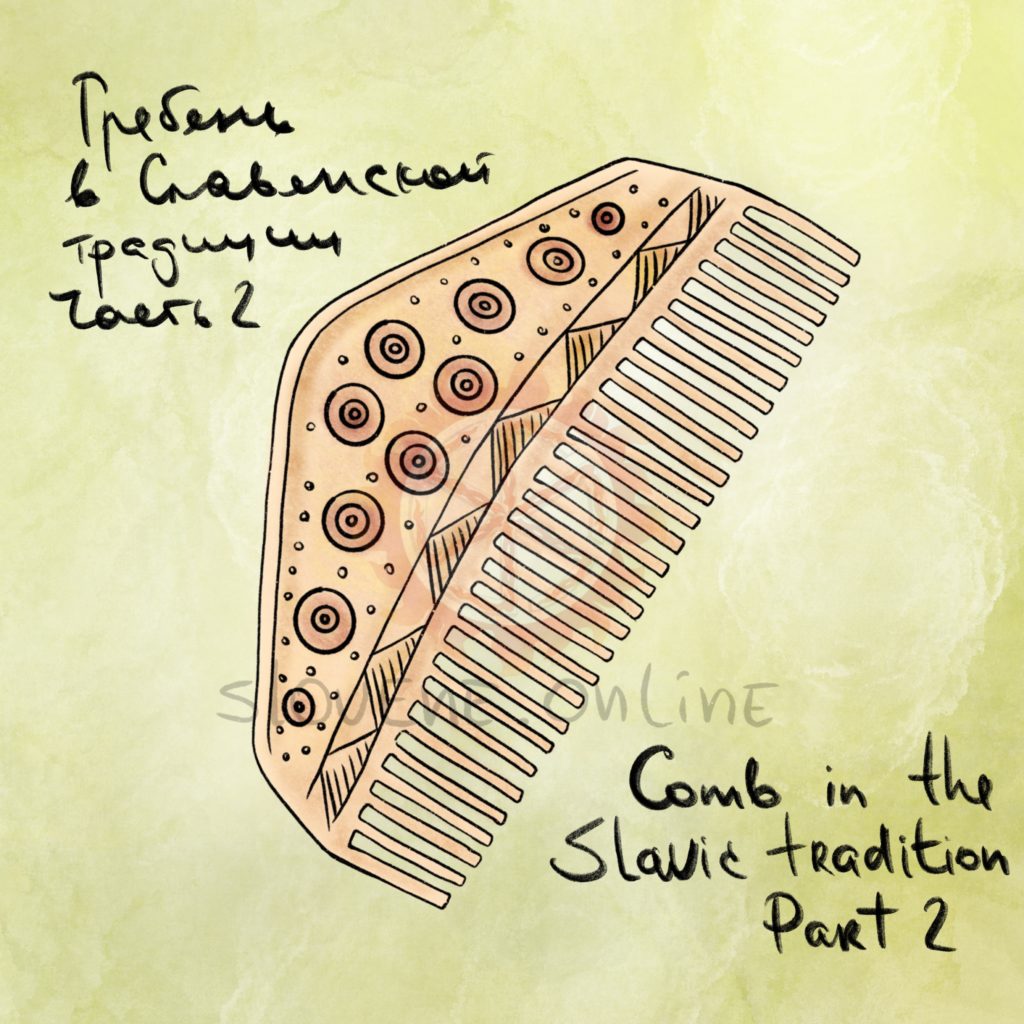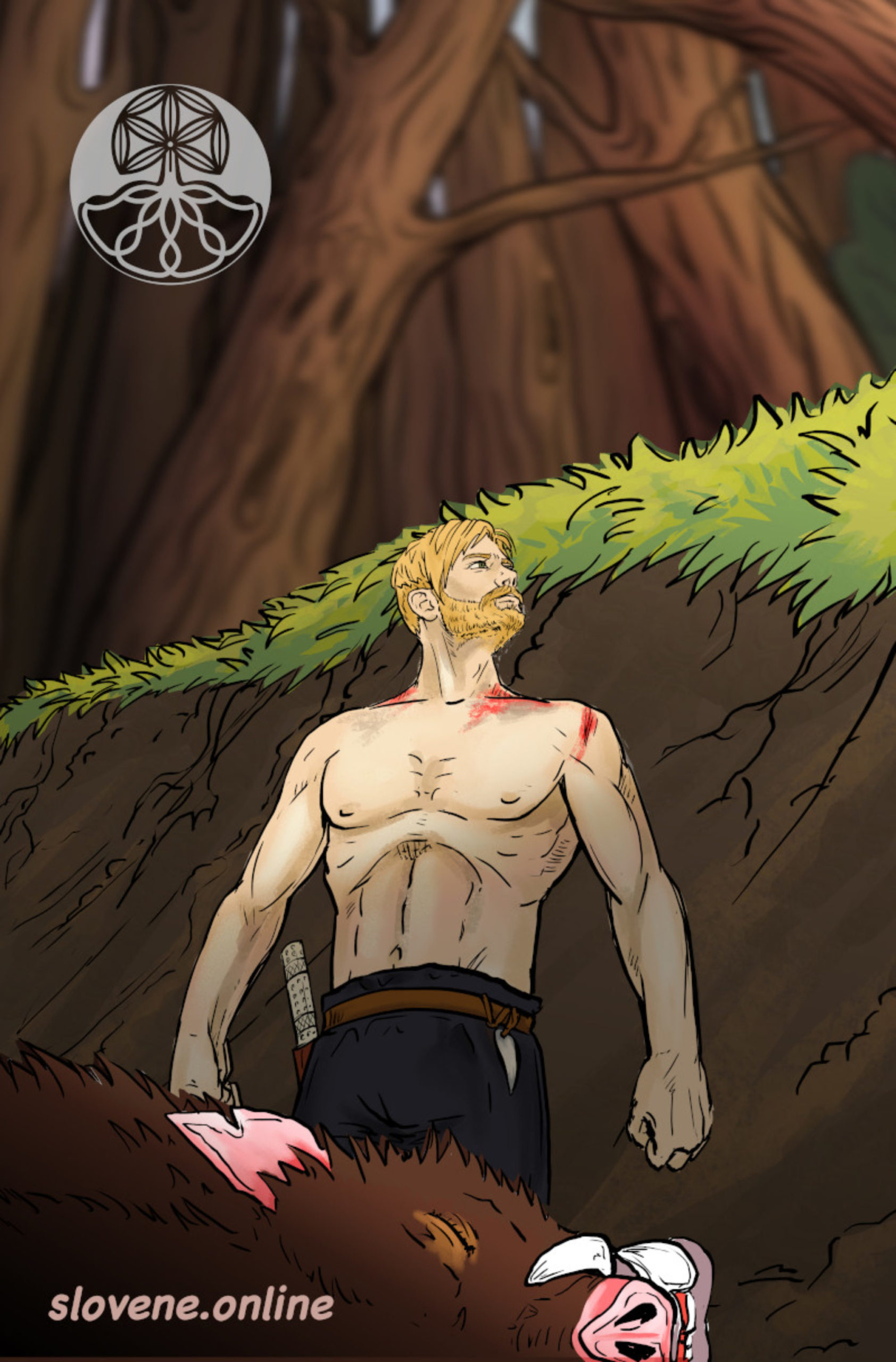Most often, the horseshoe was placed on the symbolic border of the “home space”. The Serbs buried it under the doorstep or in the foundation of the house during construction. Eastern and southern Slavs nailed a horseshoe on the doorstep or hung over the doors, as well as in the barn.
ꏍ
In the Carpathians, a horseshoe, together with an old shovel, was stuck into cabbage beds in the garden, so that people would look at these objects (and not at the cabbage) – in order to protect the crop from being “jinxed”. In Polesie, a horseshoe was placed under a girl’s pillow at night as part of a love magic ritual “to attract the boys.”
ꏍ
A horseshoe was nailed at the doorstep to “attract wealth to home,” as they said in Zhitomir (Ukraine), or for “people to be healthy like a horse,” as they said in Brest (Belarus). In Serbia, for a housewarming party, a horseshoe was nailed in front of the new house, “so that the happiness would go into the house, and not from it”. According to the Slavic tradition, a horseshoe found on the road was endowed with such special powers more than others.
ꏍ
Do you have a horseshoe at home? Where do you keep it and for what purpose?
ꏍ
To be continued…
ꏍ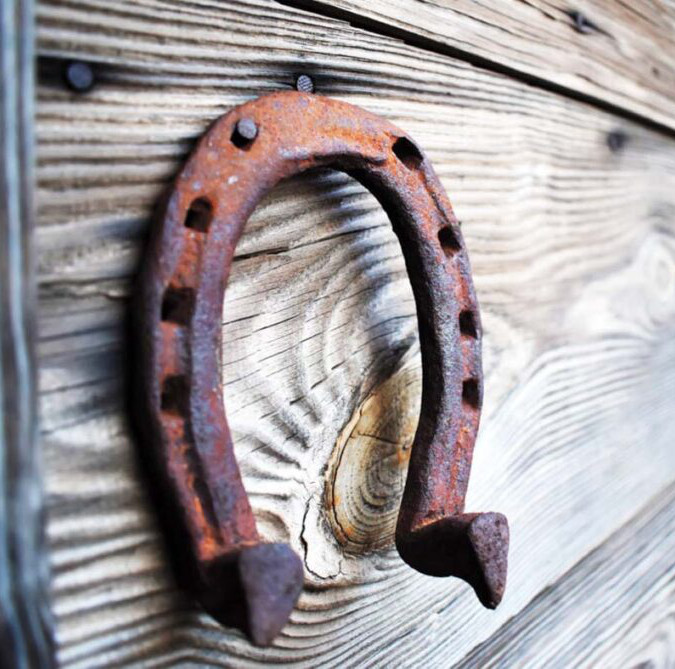
Horseshoe in Slavic tradition
Horseshoe in Slavic tradition served as a talisman both for people and house animals. It protected home from the evil eye and spirits, did not allow witches and sorcerers to “steal” milk from cows. And diseases, as the eastern and southern Slavs believed, were “captured” by the horseshoe and were not able enter the house.
ꏍ
In Russia, Serbia and Belarus, a horseshoe placed on the border of the home space was also believed to have a fertility/ producing power. It was perceived as an amulet capable of bringing good luck, happiness, fertility for people and animals, good cattle milk yield. In Polesie region, horseshoe was also used in love magic. 💕
ꏍ
Such properties of the horseshoe are due to the ability of iron to ward off evil spirits, as well as the method of crafting it (the blacksmith, forging the horseshoe, beats it with a hammer) and the fact that it was associated with a horse that trampled the horseshoe with its feet.
ꏍ
What properties do you think a horseshoe from a gift shop has?
ꏍ
To be continued…
ꏍ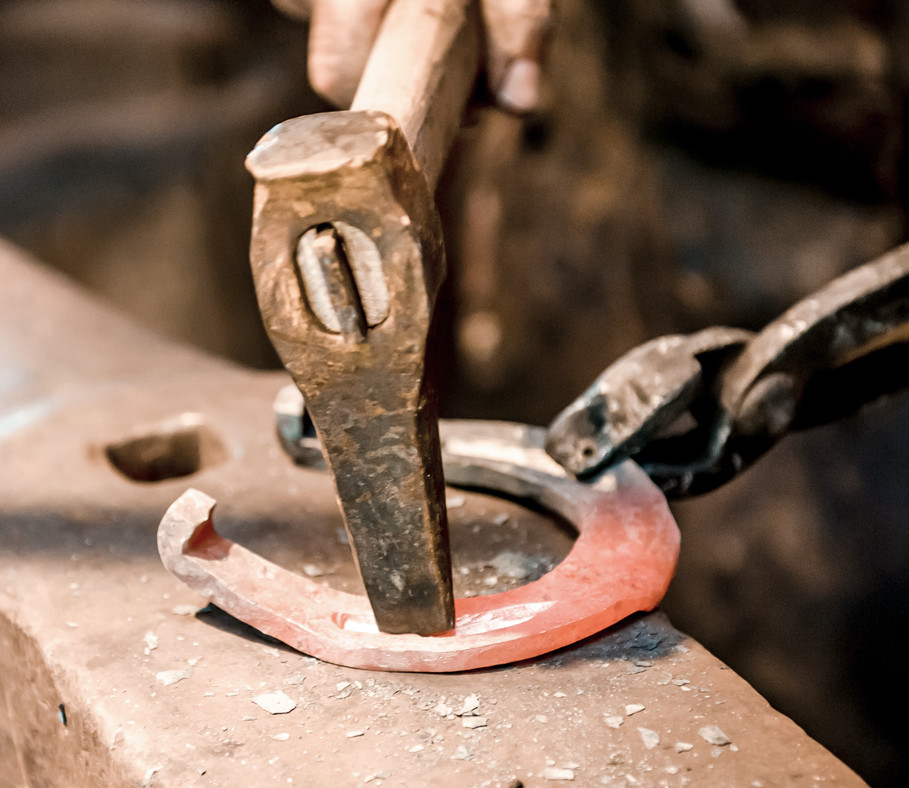
Slavs used feathers as talismans as well as medication
In Belarus, the feather of a stork (as an “enemy” of reptiles and all evil spirits) was stuffed into the floor or into the wall near the bed from fleas. For similar purposes, Bulgarians used crane’s feathers. To protect a woman in labor from evil spirits, Serbians fumigated her with a straw and feathers taken from three empty nests.
ꏍ
To heal a fever, Slavs used a smoke from several feathers plucked from a young hen, which had not yet laid any eggs. With fresh feathers of a partridge or an owl, the Poles treated aches in the lower back and joints, covering sore spots with them.
ꏍ
For healing, the South Slavs used the feathers of sacrificial hens, chicks and roosters (usually black), which were slaughtered during the “wolf” holidays. Such feathers Serbians used to fumigate sick children or women in labor during childbirth. Bulgarians used rooster feathers for healing, and chicken feathers for fortune-telling.
ꏍ
Stork, chicken, crane, owl, partridge … What other birds do you know, whose feathers have special properties?
ꏍ
More interesting facts can be found in: “Slavic Antiquities” – encyclopedic dictionary in 5 volumes by Institute for Slavic Studies of the Russian Academy of Sciences.
ꏍ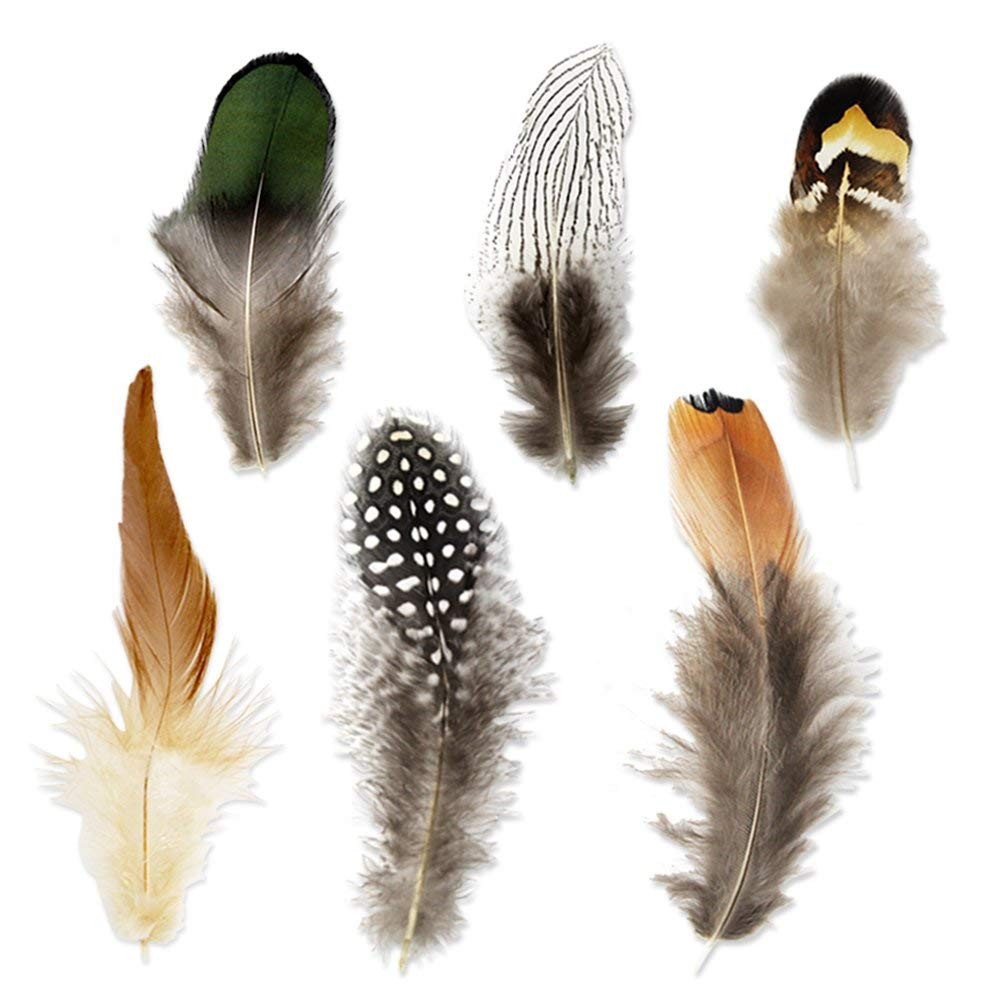
Rope in Slavic tradition – part 1
A common rope used today, was also considered a talisman by the ancient Slavs. It protected from curses and even helped to neutralize evil spirits.
ꏍ
Before the wedding, the North Russian Slavs tied a rope (a belt or a fishing net) over the naked body of the bride and groom to protect them from evil spells. For the same purpose, the Serbs surrounded the bed of a woman in labor and a child with a rope. Slavs would also put a red rope or a ribbon on a hand of a child or a pregnant woman, as well as just a beautiful girl, to protect them from being cursed. In general, using rope as a belt, was one of the ways to create a magic circle, which ensured the inviolability and safety of the person in it.
ꏍ
Macedonians believed that a person could tie a vampire by throwing a noose around his neck with a reed rope. The Poles believed that a rope woven from nine bast strips was suitable for capturing Vodyanoi. They also were ready to chase away Mara, who came at night to strangle people, by beating her with a rope or a belt.
ꏍ
To be continued…
ꏍ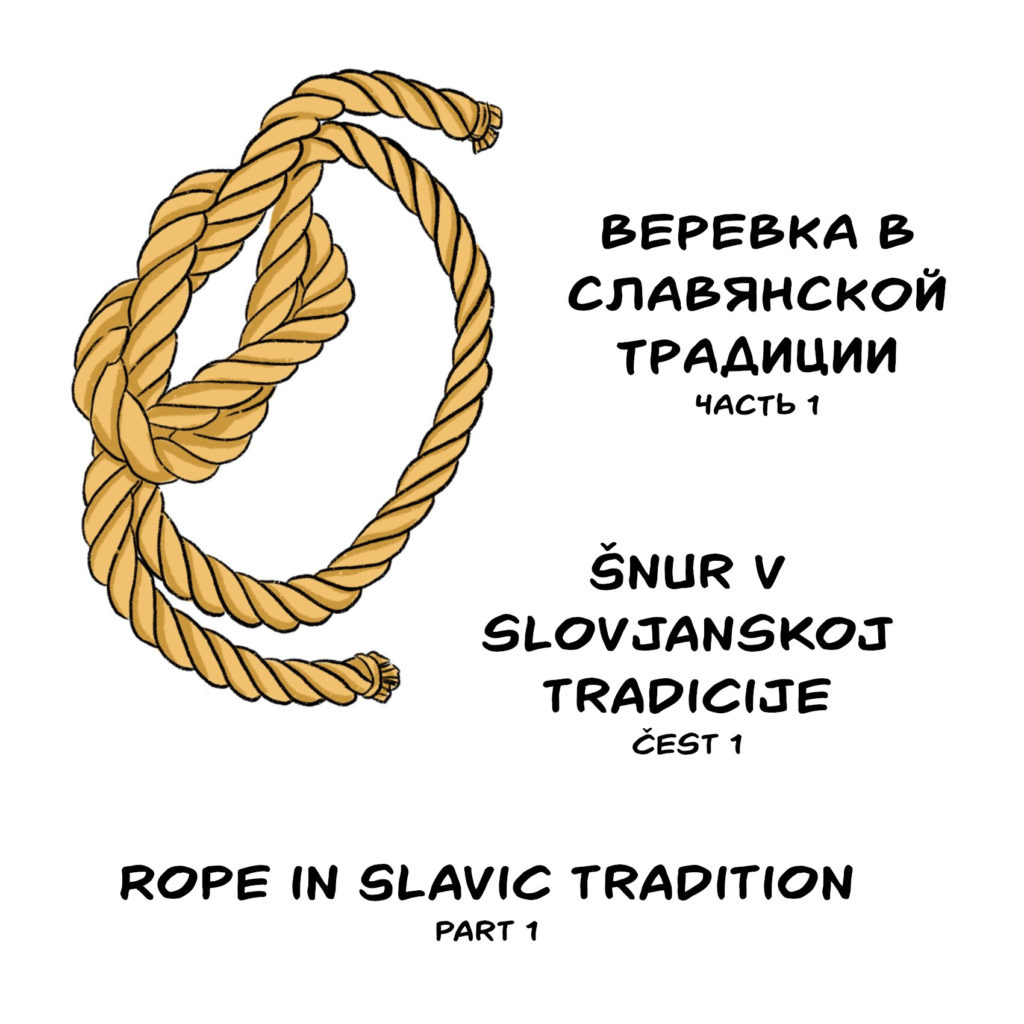
Comb in the Slavic tradition – Part 2
Slavs also used the comb in reproduction magic. Going to the first seeding, the Serbs and Macedonians would put it in a bag of seeds or stirred seeds prepared for sowing with it, so that the spike of wheat / rye would have “frequent grains” like the teeth of a comb. The Croats, before taking the cattle for sale, combed it and pronounced: “Koliko zubaca, toliko kupaca” (“How many teeth, so many buyers”). After combing the sheep, the Russians threw the broken comb and the wool back into the sheepfold so that animals would have more wool.
We continue to familiarize you with the customs and beliefs of the ancient Slavic people, while working on the animated fantasy comic book series. In such posts, as if jumping forward in time, we shed light upon and help to understand the events that will occur in our story … 😉
All Slavs used the comb as a talisman against evil spirits, curses, diseases, wild animals, etc. The Serbs protected newborns from Veshtitsa (Вештица – Witch) and other demons with one or two combs, put on both sides of a child head. Therefore, Veshtitsa would prick herself if tried to approach the baby. The Eastern Slavs used to put a comb or a spindle in a cradle so that a baby could sleep peacefully.
A comb was also used for hexing others. The Serbs for example, would put two combs on both sides of the road on the wedding day, and when the young couple passed, they connected and hid those combs: after that, the couple would have arguments for all their life. The Russians of the Novgorod region believed that sorcerers performed all their malicious actions with the help of a comb. The Macedonians believed that women who had violated the ban on work in the evenings, were drowned in the water or brushed with large combs by Karakondzhulas (Караконцол). Interestingly, the comb is an attribute of many mythological creatures: goddesses (boginka), mermaids, female water spirits, etc., who usually combed their long hair in a story.
Source: “Slavic Antiquities” – encyclopedic dictionary in 5 volumes by Institute for Slavic Studies of the Russian Academy of Sciences.
